Common names: gatekeeper, hedge brown, small meadow brown, hedge eye
Scientific name: Pyronia tithonus
Family: Nymphalidae
Habitat: scrubby hedgerows, woodland edges and grassland
Predators: birds, small mammals, domestic cats
Origin: native
Named for its rigorous patrol of hedges and woodland rides, the gatekeeper butterfly is a prime pollinator. Look for them sipping nectar on sunny days in the summer.
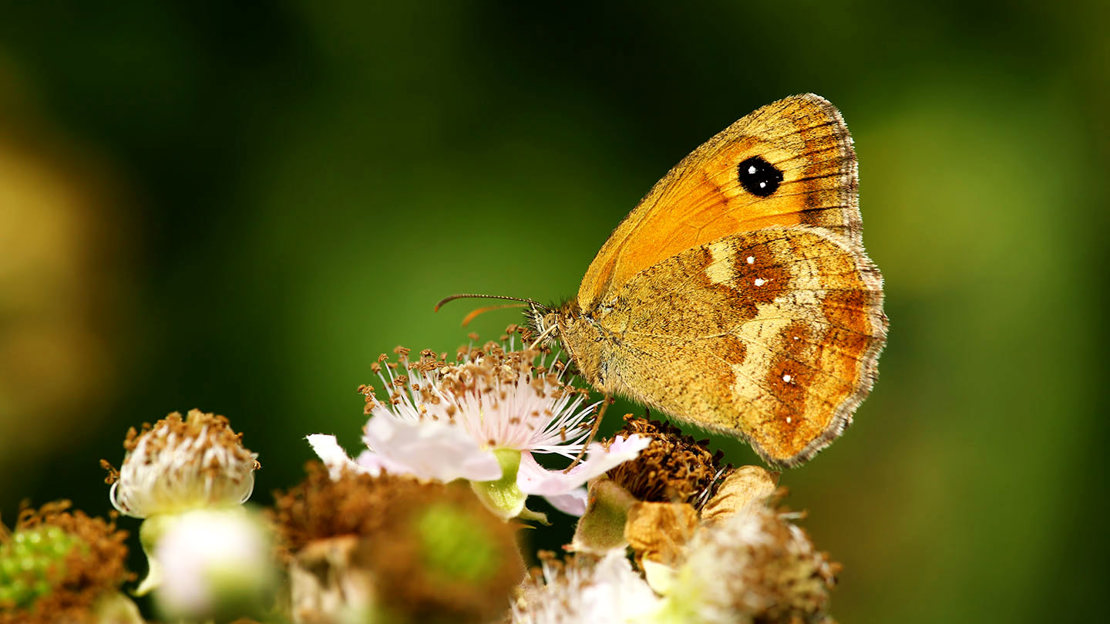
Common names: gatekeeper, hedge brown, small meadow brown, hedge eye
Scientific name: Pyronia tithonus
Family: Nymphalidae
Habitat: scrubby hedgerows, woodland edges and grassland
Predators: birds, small mammals, domestic cats
Origin: native
Caterpillars: gatekeeper larvae can be either light brown or green.
Adults: medium-sized orange and brown butterflies. They are easy to identify - look out for the black spot near the wing tip that usually contains two tiny white dots. Male and female gatekeepers are similar in appearance, but male gatekeepers have a prominent band of dark scales running diagonally across the forewings. They are also noticeably smaller than the females.
Wingspan: around 4cm.
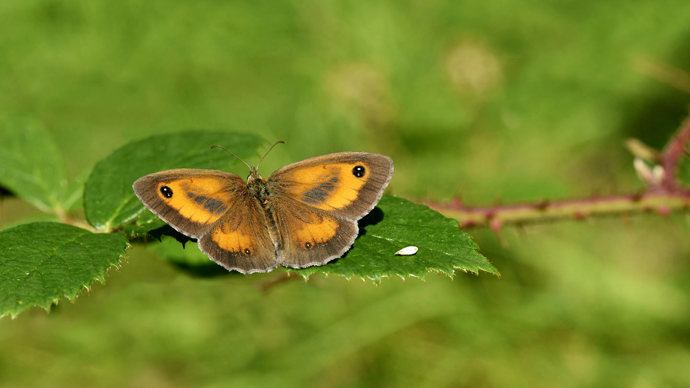
Credit: Paul Sterry / WTML
Caterpillars: feed at night on the tender young leaves of grasses.
Adults: take nectar from bramble, wild marjoram, wood sage, common ragwort and other flowering plants.
The patterns on the gatekeeper’s wing can change subtly for a variety of reasons including temperature as they develop.
The males keep small territories – sometimes a single shrub – and fly up to meet likely mates fluttering by. There is one generation of new gatekeepers per year. Adults emerge in mid-summer, mate, and then females produce 100 eggs which they lay individually in shady spots.
Each egg takes two to three weeks to develop before the young caterpillar emerges. The larva feeds on grasses before developing into pupa, with adults emerging in late summer.
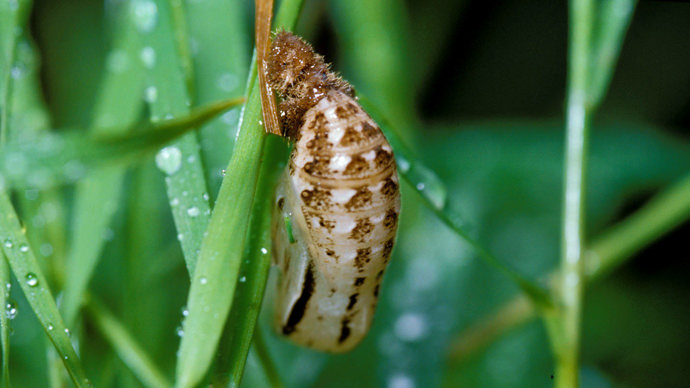
Credit: Papilio / Alamy Stock Photo
Caterpillars hibernate in September when they are still quite small. They become active again from March and achieve full growth by late May or early June. At this point, they pupate to become adults.
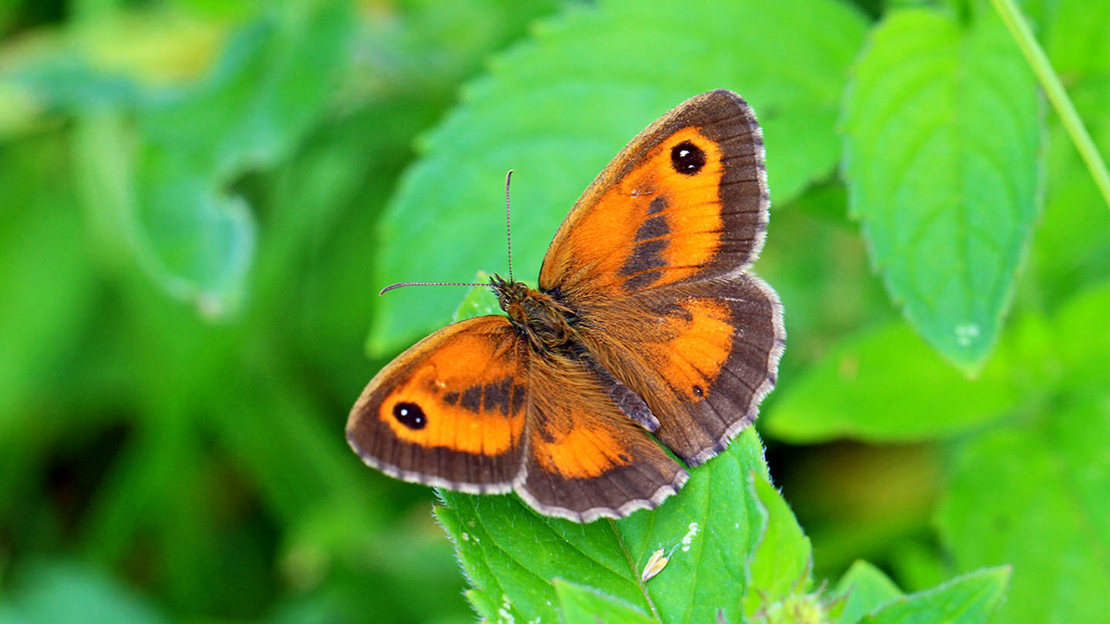
The eyespots on gatekeeper's wings are intended to deter predators like birds.
They are widespread across England and Wales, but are absent from Scotland and Northern Ireland. They need long grass and the kind of scrub that thrives when old woods regenerate.
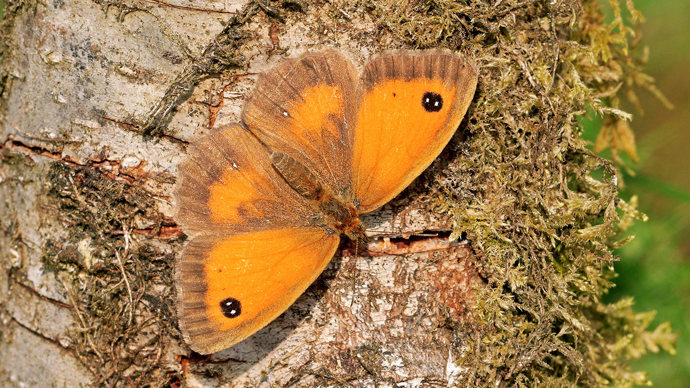
Credit: Philip Mugridge / Alamy Stock Photo
Look for gatekeepers in hedgerows and woodland edges, flitting from flower to flower in low vegetation. Spot them resting on food plants on overcast days, and pollinating flowers on bright sunny days.
The gatekeeper butterfly is currently stable in the UK, and is not a species of conservation concern.